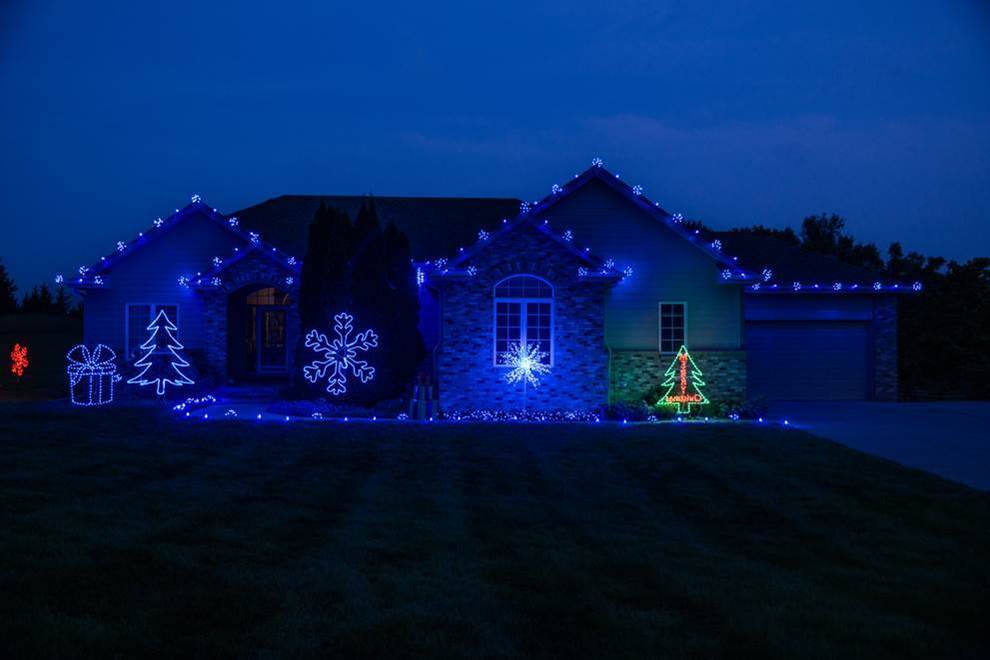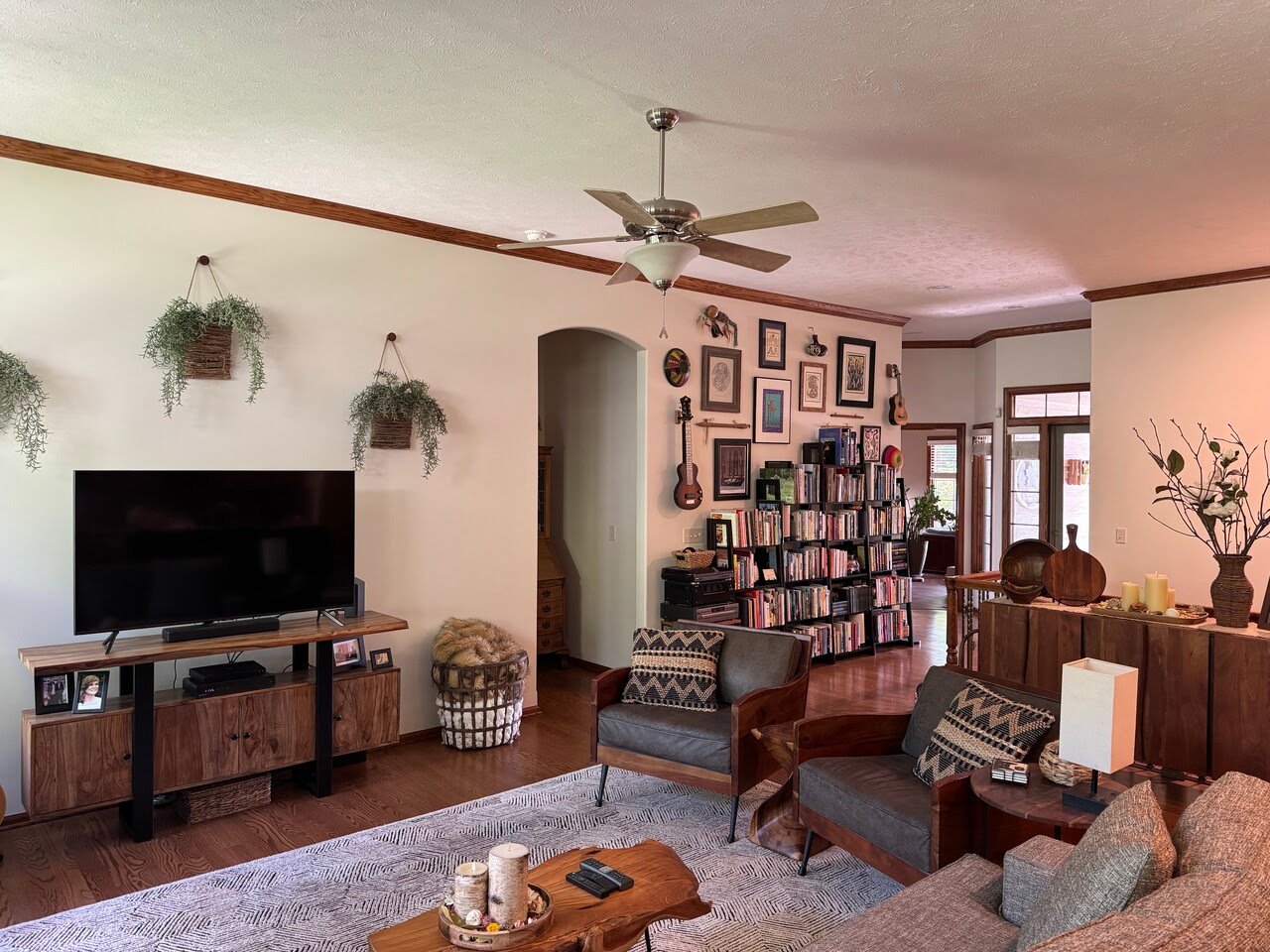How Long Will a Wooden Deck Last Without Stain in Omaha?
September 26th, 2024
5 min read
-Sep-26-2024-01-57-52-7091-PM.png?width=800&height=418&name=Blog%20Post%20Image%20Size%20(2)-Sep-26-2024-01-57-52-7091-PM.png)
Living in Omaha, you've just added a fantastic new feature to your home - a beautiful wooden deck. It's more than just a few planks nailed together; it's a blank canvas for countless summer barbecues, a stage for kids' play on lazy Sunday afternoons, and your retreat after a long day at work. But as you stand there admiring your new outdoor space, a thought crosses your mind: should you stain it? And if so, when? You want to make sure you're doing everything right to protect your investment and keep it looking great for many years to come.
At Brush & Roll Painting, we've been helping Omaha homeowners make the most of their outdoor spaces for almost 30 years. We've seen every type of deck imaginable, from brand-new cedar to weathered oak. Our team has tackled countless staining projects and advised homeowners on the best ways to protect their investments.
In this article, we're going to dive deep into the world of deck staining. You'll learn how long a wooden deck can last without stain, the pros and cons of staining, and when's the right time to break out those brushes. By the time you finish reading, you'll have a clear understanding of what's best for your
How Long Will a New Wooden Deck Last Without Stain?
Let's start with the million-dollar question: How long can your wooden deck survive without a stain? The answer isn't as straightforward as you might think, but don't worry, we'll break it down for you.
On average, an unstained wooden deck can last anywhere from 10 to 30 years. That's quite a range, right? The big difference comes down to a few key factors:
- Wood Type: The type of wood your deck is made from plays a huge role in its longevity. Cedar and redwood, for example, are naturally resistant to decay and insects. They can last 15-20 years or more without treatment. Pressure-treated pine, a popular choice in Omaha due to its affordability, can last 15-20 years as well.
- Climate: Here in Omaha, we experience all four seasons in their full glory. Our hot summers and cold winters can be tough on wood. The freeze-thaw cycles we experience can cause wood to crack and split over time.
- Sun Exposure: If your deck gets a lot of direct sunlight, it'll weather faster. UV rays can break down wood fibers, leading to graying and splintering.
- Maintenance: Regular cleaning and care can significantly extend the life of an unstained deck.
A study by the Forest Products Laboratory found that untreated wood exposed to the elements can start to decay in as little as 5 years. However, with proper care, it can last much longer.

Benefits of Not Staining a Wood Deck
Now, you might be wondering, "Why would anyone choose not to stain their deck?" Well, there are actually a few reasons:
- Natural Look: Some homeowners love the weathered, silvery look of aged wood. It can give your outdoor space a rustic, lived-in feel.
- Low Maintenance: An unstained deck doesn't require regular re-staining, which can save time and money in the short term.
- Eco-Friendly: If you're environmentally conscious, you might prefer to avoid using chemical stains and sealers.
- Cost-Effective Initially: Not staining means not buying stain or hiring professionals, which can be a significant upfront saving.
Benefits of Staining a Wood Deck
On the flip side, staining your deck comes with its own set of advantages:
- Protection from Moisture: Deck stain acts as a barrier, preventing water from penetrating the wood. This is crucial in Omaha, where we get our fair share of rain and snow.
- UV Protection: Quality stains contain UV blockers that protect the wood from sun damage, preventing premature aging and color fading.
- Prevents Warping and Cracking: By keeping moisture out, stain helps prevent the wood from warping, twisting, or cracking.
- Enhances Wood Grain: Many stains can bring out the natural beauty of the wood grain, enhancing your deck's appearance.
- Increases Lifespan: A well-maintained, stained deck can last 30 years or more. That's potentially double the lifespan of an unstained deck!
- Easier to Clean: Stained surfaces are often easier to clean and maintain than raw wood.
A study published in the Journal of Coatings Technology and Research found that properly applied wood stains can extend the life of exterior wood by up to 200%.
 When to Stain a New Wooden Deck
When to Stain a New Wooden Deck
If you've just had a new deck installed, you're probably eager to get it stained and sealed. But hold your horses! Staining too soon can actually do more harm than good.
For new wooden decks, it's best to wait before applying any stain or sealer. But how long should you wait? Here's a general guideline:
- Pressure-Treated Wood: Wait 10-12 months before staining. This allows the chemicals used in the pressure-treating process to evaporate fully.
- Cedar or Redwood: These can typically be stained right away, but waiting 3-4 weeks can help the wood acclimate and accept the stain better.
- Other Woods: For most other types of wood, waiting about a month is a good rule of thumb.
During this waiting period, it's important to keep your deck clean. Sweep it regularly and wash it with a mild soap solution if needed. This helps prepare the surface for staining.
Why the wait? New wood is often too moist to accept stains properly. Staining too soon can lead to many issues:
- Poor Stain Absorption: The wood may not take the stain evenly, resulting in a blotchy appearance.
- Peeling or Flaking: If moisture is trapped under the stain, it can cause the stain to peel or flake off prematurely.
- Mold Growth: Trapped moisture can also lead to mold growth, which can damage the wood and pose health risks.
A good test to see if your deck is ready for staining is the water bead test. Sprinkle some water on the deck. If it beads up, the wood is still too wet. If it absorbs quickly, you're good to go!
Choosing the Right Deck Stain
Once your deck is ready for staining, you'll need to choose the right product. There are several types of stains available:
- Clear Sealer: This offers the least color change and UV protection but allows the natural wood grain to show through.
- Semi-Transparent Stain: This adds some color while still showing wood grain. It offers better UV protection than a clear sealer.
- Solid Stain: This provides the most color and UV protection but hides the wood grain. However, this will be difficult to undo. So if you use a heavier stain now, you may be making a longer commitment and may not be able to change the stain later on.
When choosing a stain, consider factors like the wood type, the look you want to achieve, and the level of protection needed. In Omaha's climate, a product with good UV and moisture protection is crucial.

Tips for Cleaning Stained and Unstained Decks
Whether you choose to stain your deck or leave it natural, proper maintenance is key to longevity:
- Regular Cleaning: Sweep your deck weekly and wash it with a mild soap solution at least twice a year.
- Inspect Regularly: Look for signs of damage like loose boards, protruding nails, or rot. Address these issues promptly.
- Remove Debris: Don't let leaves, pine needles, or other debris accumulate. They can trap moisture against the wood.
- Re-stain as Needed: If you choose to stain, plan on re-applying every 2-3 years, or as recommended by the stain manufacturer.
- Mind the Gap: Ensure there's proper ventilation under your deck to prevent moisture buildup.
By following these tips, you can significantly extend the life of your deck, whether it's stained or not.
Staining Your New Wood Deck
Whether you choose to embrace the natural, weathered look or opt for the protection of a quality stain, the key is consistent care and maintenance. Your deck is an extension of your home, a place where memories are made, and with the right care, it can continue to be that special place for decades.
At Brush & Roll Painting, we're more than just painters – we're your partners in home care. We understand the unique challenges that Omaha's climate presents, and we're here to help you navigate them. We've shared our expertise in this article because we know you deserve the right information when making decisions about your home investments.
Click the button below to get a quote and take the first step towards a beautiful, long-lasting deck. Let's work together to keep your outdoor space looking its best for years to come!
Whether you are tackling a deck staining project by yourself or planning on hiring a painter, you deserve to be confident throughout the project so you don’t make any mistakes. Click the button below to get your deck-staining project checklist so you can tackle your project stress-free.
Kaylea is the Brush & Roll Painting Content Manager. Kaylea is a Journalism and Media Communications summa cum laude graduate with a minor in Marketing from the University of Nebraska at Omaha. Kaylea manages the marketing for Brush & Roll Painting.
















-Jul-23-2025-02-21-33-5468-PM.png?width=800&height=418&name=Blog%20Post%20Image%20Size%20(2)-Jul-23-2025-02-21-33-5468-PM.png)




-Oct-22-2025-01-39-19-5208-PM.png?width=800&height=418&name=Blog%20Post%20Image%20Size%20(1)-Oct-22-2025-01-39-19-5208-PM.png)





